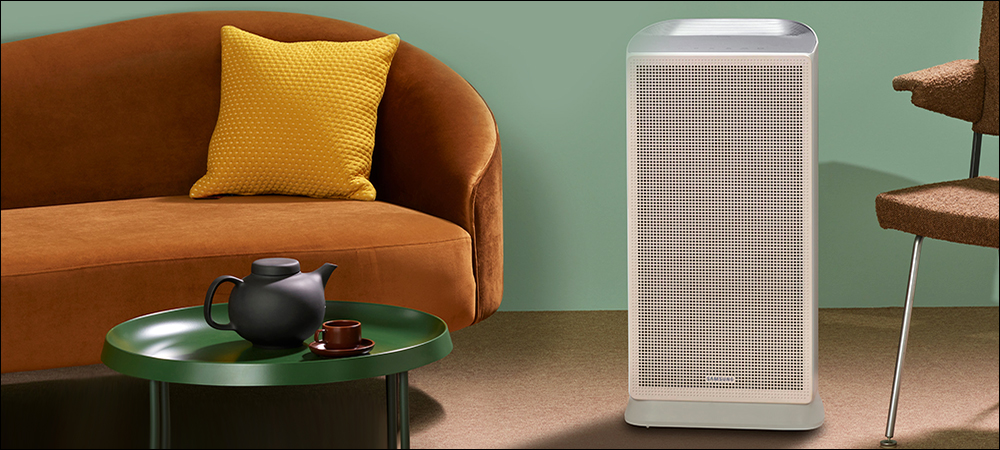- Samsung Provides IoT-enabled Air Purifiers in India
- Memfault, Nordic Semiconductor Extend BLE IoT Partnership
- Everspin Technologies Announces Memory Device for IoT Use
- Avnet Unveils Computer Imaging Solutions Module for IoT
- Murata Offers Wireless Module with Built-in MCU for IoT
- S. Department of Commerce Appoints IoT Advisory Board
Presented here are recent news announcements in the radio frequency identification and Internet of Things industries.
Samsung Provides IoT-enabled Air Purifiers in India
Samsung India has announced a range of Internet of Things (IoT)-enabled air purifiers designed to provide clean air regardless of environmental or room conditions. The models in the new line cover an area of up to 645 square feet, the company reports, making them suitable for bedrooms, fitness studios, hospital rooms and other large spaces. The new purifiers, models AX46 and AX32, feature a one-button control intended to remove 99.97 percent of nano-sized particles, ultrafine dust, bacteria and allergens, as well as destroy potentially dangerous volatile organic compounds, including formaldehyde, to ensure consumers breathe pure air.
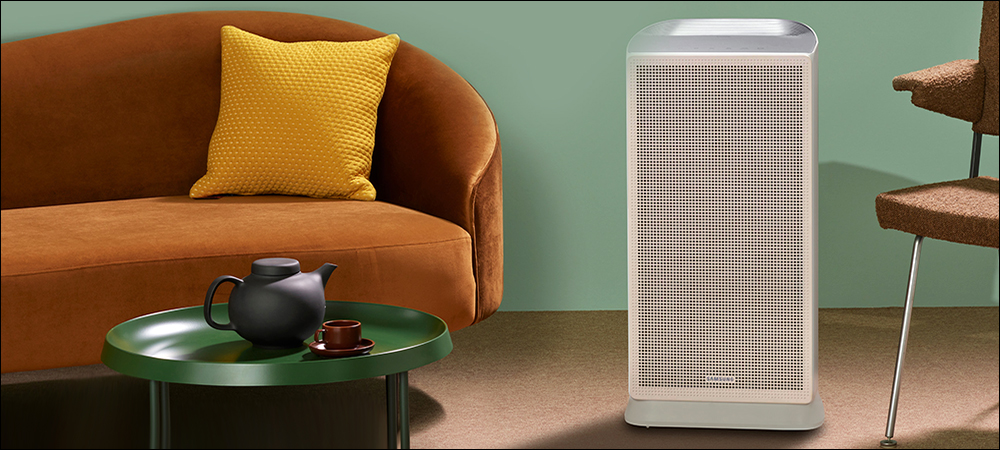 An app from SmartThings enables consumers to remotely control the air purifiers, and to turn them on and off to save energy. Consumers can check air quality from anywhere via their smartphones, as well as control other functions of the purifiers. The devices are designed to address air quality issues such as gases, dust, chemicals and odors, offering purification functions including front air intake and three-way air flow. The front air inflow function draws air in, then a power fan distributes clean air in multiple directions via the three-way air flow function. The purifiers feature a multi-layered high-efficiency purification system to remove ultrafine dust.
An app from SmartThings enables consumers to remotely control the air purifiers, and to turn them on and off to save energy. Consumers can check air quality from anywhere via their smartphones, as well as control other functions of the purifiers. The devices are designed to address air quality issues such as gases, dust, chemicals and odors, offering purification functions including front air intake and three-way air flow. The front air inflow function draws air in, then a power fan distributes clean air in multiple directions via the three-way air flow function. The purifiers feature a multi-layered high-efficiency purification system to remove ultrafine dust.
The system includes a washable pre-filter for extracting larger dust particles, an activated carbon deodorization filter that removes harmful gases, and a dust-collecting filter that captures ultrafine dust. The AX46 model features a numeric easy-view display and a laser PM 1.0 sensor. The sensor monitors air quality in real time and identifies gaseous contaminants. Users can see the results on the display, which shows the level of PM 1.0/2.5/10 pollutants and the overall air quality level with a four-color indicator. The system utilizes SmartThings connectivity.
“Consumers have grown more aware and health conscious,” said Mohandeep Singh, the senior VP of Samsung India’s Consumer Electronics Business, in a prepared statement. “When it comes to breathing clean air, they are making more informed decisions and looking for air purifiers that offer wider purification coverage area and clean room air in minimum time. Our latest range of air purifiers is designed to remove even the most ultrafine dust particles effectively allowing consumers to breathe pure air. We are optimistic that our new range of air purifiers will help improve the lifestyle of consumers.”
Memfault, Nordic Semiconductor Extend BLE IoT Partnership
Memfault, an IoT reliability platform provider, has extended its partnership with Nordic Semiconductor to offer access to Memfault’s device reliability engineering capabilities for Bluetooth Low Energy (BLE) developers building on Nordic’s nRF52 and nRF53 system-on-chips (SoCs). The updated integration gives nRF52 and nRF53 developers the same experience as nRF91 developers, the companies report, with an out-of-the-box integration of the Memfault platform.
According to the companies, building devices that utilize BLE technology introduces performance and debugging challenges that make access to field diagnostic data critical to delivering a successful product. Such challenges include wireless range and communication stability in real-world environments, connection handshaking and performance with varied BLE gateways and mobile devices, and battery life optimization. Memfault’s IoT reliability platform captures relevant metrics and issues data remotely from devices operating in development or production. It develops fixes or improvements, and it monitors updates across hardware and software releases.
The nRF Connect SDK v2.1.0 enables the rapid creation of a data pipeline for the nRF52 and nRF53 series to the cloud, the companies notes, as well as device-debugging and fault-analysis capabilities. It includes Memfault SDK examples and template gateway applications for both Android- and iOS-based developers.
Once the Memfault SDK is deployed on the nRF52 or nRF53 SoCs, Memfault’s cloud portal will alert developers immediately if a bug occurs. Users can view the status of their device fleet and access detailed reports with tailored diagnostic information for analysis at the time the fault occurred. Developers can determine whether issues have the same provenance through Memfault’s fault aggregation and deduplication techniques, which show the occurrence of a specific fault across the entire population of devices.
Everspin Technologies Announces Memory Device for IoT Use
Everspin Technologies, a developer and manufacturer of magnetoresistive random access memory (MRAM) persistent memory solutions, has announced that its high-density STT-MRAM product family, known as EMxxLX, is commercially available. According to the company, the EMxxLX technology is intended for use in electronic systems requiring data persistence and integrity, low power, low latency and security.
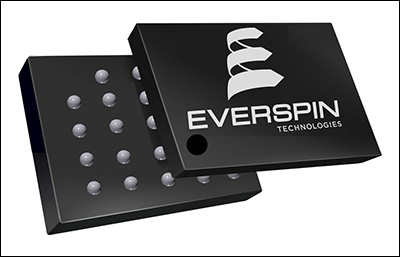 Applications include Industrial Internet of Things (IIoT), network and enterprise infrastructure, process automation and control, aeronautics and avionics, medical, gaming and FPGA configurations. The EMxxLX includes an xSPI serial interface based on Everspin’s STT-MRAM technology. It offers a read and write bandwidth of 400 megabytes per second via eight input-output signals with a clock frequency of 200 MHz. The devices are offered in densities ranging from 8 to 64 megabits.
Applications include Industrial Internet of Things (IIoT), network and enterprise infrastructure, process automation and control, aeronautics and avionics, medical, gaming and FPGA configurations. The EMxxLX includes an xSPI serial interface based on Everspin’s STT-MRAM technology. It offers a read and write bandwidth of 400 megabytes per second via eight input-output signals with a clock frequency of 200 MHz. The devices are offered in densities ranging from 8 to 64 megabits.
“In the fast-growing Industrial IoT and embedded systems markets, customers, more than ever, need to protect critical system data under all conditions, particularly in the event of power loss and without concern for wear out or data integrity issues,” said Sanjeev Aggarwal, Everspin Technologies’ president and CEO, in a prepared statement. “Our EMxxLX MRAM devices offer SRAM-like performance with low latency, maintain memory without requiring power, and have extremely high endurance. Additionally, they are compatible with other memory types and easy to design in.”
According to Everspin, STT-MRAM technology is less susceptible to the effects of radiation. The EMxxLX product family is suitable for aerospace and aviation applications, the company reports, due to its reliability, endurance and writing speeds. “Airbus has used Everspin’s MRAM products in several critical systems,” added Stephan Roux, Airbus’s electronics hardware architect, in the prepared statement, “and we are looking forward to taking advantage of the improved performance and density of the EMxxLX products.”
Avnet Unveils Computer Imaging Solutions Module for IoT
Avnet has announced its Dual Cam SYZYGY module, designed to enable autonomous robots to detect and classify objects, farmers to receive early warnings about plant diseases and insects, and production lines to be alerted to defects. The module, Avnet reports, is an add-on peripheral device allowing designers to create computer imaging solutions, as well as design products requiring multiple cameras.
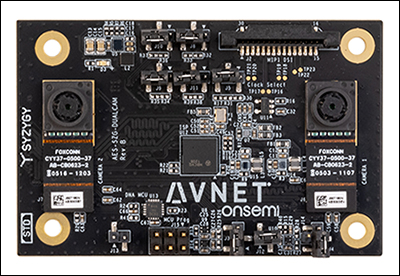 According to Avnet, the SYZYGY format enables developers to connect a camera to processing platforms supporting the SYZYGY standard interface. Avnet’s ZUBoard is an example of such a platform, and the company provides an example design showing the Dual Cam SYZYGY working with the ZUBoard for embedded vision applications. The module is available in the Americas, the EMEA and APAC regions, and Japan.
According to Avnet, the SYZYGY format enables developers to connect a camera to processing platforms supporting the SYZYGY standard interface. Avnet’s ZUBoard is an example of such a platform, and the company provides an example design showing the Dual Cam SYZYGY working with the ZUBoard for embedded vision applications. The module is available in the Americas, the EMEA and APAC regions, and Japan.
“This prototyping module is specially created for designers who are focusing on IoT vision, AI and computer imaging applications,” said Jim Beneke, the VP of Avnet’s Applications Group, in a prepared statement. “By using these industry-standard components along with the SYZYGY open standard for the module, designers will get fast peripheral connectivity. This is key for camera applications that also need to be low-cost and small.”
An AP1302 image signal processor from onsemi performs image processing functions to convert raw sensor data into a standard image format, including auto white balance and auto exposure. These processing functions reduce design efforts of developing an embedded camera system, the company explains. The AP1302 interfaces the sensors and the host processor using MIPI-CSI2 lanes.
Interchangeable dual Rayprus camera modules, based on onsemi’s AR0144 image sensor, provide a low-profile lens with an 84-degree field of view and good low-light sensitivity. The modules incorporate a global shutter pixel design optimized for accurate and fast capture of moving objects, according to the company.
The system includes onsemi CMOS digital image sensors with 1-megapixel resolution (1,280 horizontal by 800 vertical resolution) and a compatible MIPI interface. The sensors capture 60 frames per second at full resolution, enabling the capturing of clear images for such applications as scanning, industrial inspection and drone navigation.
Murata Offers Wireless Module with Built-in MCU for IoT
Murata Power Solutions has announced the availability of its Type ABR Wi-Fi 11b/g/n+MCU module with PCB antenna. Based on NXP Semiconductors‘ 88MW320 wireless microcontroller, the product supports Wi-Fi 802.11b/g/n up to 72.2Mbps PHY data rate with an integrated 200 MHz Arm Cortex-M4F MCU for host-side applications.
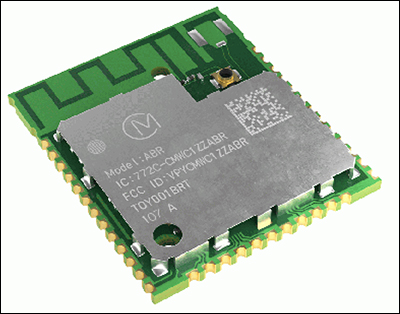 The module offers a complete network controller solution via a UART interface. The Wi-Fi, TCP/IP, security supplicant and other network application features are hosted directly on the module. Its form factor (22 millimeters by 19 millimeters by 2.4 millimeters) allows for integration into size- and power-sensitive applications such as IIoT, smart homes, sensor networks and gateways, the company indicates.
The module offers a complete network controller solution via a UART interface. The Wi-Fi, TCP/IP, security supplicant and other network application features are hosted directly on the module. Its form factor (22 millimeters by 19 millimeters by 2.4 millimeters) allows for integration into size- and power-sensitive applications such as IIoT, smart homes, sensor networks and gateways, the company indicates.
With the rapid growth of the IoT, Murata reports, the speed at which products and services go to market has become increasingly critical. Providing products with wireless communication functionality has historically required Wi-Fi and wireless communication technologies expertise, Murata notes, so it developed the Type ABR as a solution to enable Wi-Fi functionality via simple commands.
The solution is compliant with the Radio Act, Murata reports, eliminating the need to obtain separate certification. It contains a built-in NXP MCU, allowing it to be used with software development tools (EZ-Connect or WMSDKA) that leverage NXP’s framework for simplifying application development. This reduces the amount of resources spent on design, allowing IoT devices to be developed and launched more efficiently, Murata reports.
U.S. Department of Commerce Appoints IoT Advisory Board
The U.S. Department of Commerce has appointed 16 experts for its new Internet of Things Advisory Board (IoTAB), who will advise the Internet of Things Federal Working Group. The advisory board includes stakeholders outside the federal government with expertise relating to the IoT. The board represents a range of disciplines from across academia, industry and civil society. Board members will serve two-year appointments, and all meetings will be open to the public.
The appointments are the first for the recently established advisory board, created in accordance with the requirements of the William M. (Mac) Thornberry National Defense Authorization Act for Fiscal Year 2021, and in accordance with the Federal Advisory Committee Act, as amended. The National Institute of Standards and Technology (NIST) will provide administrative support to the advisory board, and information on board activities can be found at NIST’s website.
The board will advise the federal working group on matters including the identification of federal regulations, programs or policies that may inhibit or promote IoT development; situations in which the IoT could deliver significant and scalable economic and societal benefits to the United States, including smart traffic and transit technologies, augmented logistics and supply chains, environmental monitoring, and healthcare; IoT opportunities and challenges for small businesses; and IoT-related international opportunities. Full details on the board’s activities are provided in a Federal Register notice, and those interested can view a list of board appointees here.

